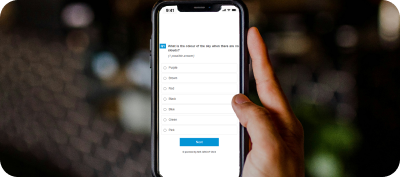Market research is a surprisingly diverse tool for understanding consumer behaviour, opinions and trends. It relies on a variety of different data sets that are analysed statistically to uncover insightful patterns and correlations. To collect the necessary data, researchers can employ many different survey methodologies, each with distinct features and advantages.
Online Survey MethodologiesOnline survey methodologies have revolutionised data collection by leveraging digital platforms to reach vast audiences efficiently. These methods offer flexibility, speed and the ability to target specific demographics, making them ideal for a wide range of research objectives. Below are some of the most commonly used online survey methods:
a. Panel SurveysPanel surveys utilise pre-recruited groups of respondents who participate in surveys regularly. These panels are designed to be representative of the target population, enabling researchers to track trends and behaviours over an extended period. Participants are often incentivised through rewards or points redeemable for products.
The key advantages of panel surveys include the ability to gather longitudinal data, providing valuable insights into how behaviours evolve over time. These panels are typically well-qualified, allowing for precise targeting without the need for an overly large sample size. Additionally, well-managed panels can swiftly identify and exclude low-quality responses, ensuring the integrity of the data. Speed of data collection is another significant benefit of this method.
b. Social Network SurveysSocial network surveys leverage the vast user bases of platforms like Facebook, X or Instagram to gather data. This method allows researchers to target specific groups based on demographic, interest or behavioural criteria, with survey ads appearing directly in users' feeds to encourage participation.
The wide reach and precise targeting capabilities of social network surveys are major advantages, facilitating interaction with specific segments of the population. However, this method can suffer from coverage bias, as social network users may not represent the broader population. Additionally, the public nature of these platforms and reliance on algorithms can influence response quality. Shorter, less detailed questionnaires are often necessary to maintain participant engagement.
c. Web SurveysWeb surveys are conducted through links or advertisements on websites, allowing participants to access surveys at their convenience. This method is particularly useful for reaching a broad audience and collecting data continuously in real-time.
However, web surveys can be time-consuming to set up and often yield low response rates, as potential participants may ignore or delete invitations. There is also a risk of sampling bias, as voluntary participants might not accurately represent the target population.
d. River SamplingRiver sampling is an online data collection method where respondents are recruited in real time through advertising networks and various websites. Participants are directed to the survey via banners or promotional links.
This method is effective for quickly recruiting a diverse range of participants, making it ideal for surveys requiring rapid responses. However, river sampling can experience coverage bias and response quality issues, as respondents might be motivated primarily by incentives rather than genuine interest in the survey topic. Ensuring the representativeness and accuracy of respondent profiles can also be challenging.
Offline Survey MethodologiesOffline survey methodologies remain essential for reaching segments of the population that are less accessible through digital means. These methods often provide richer, more nuanced data and are particularly valuable in scenarios where personal interaction or in-depth exploration is required. Here are some of the key offline survey methods:
a. Face-to-Face SurveysFace-to-face surveys, also called focus groups, involve interviewers administering questionnaires in person, allowing for detailed responses and the observation of non-verbal reactions. This method provides a wealth of qualitative data to complement the quantitative insights.
The primary advantages of face-to-face surveys are the ability to clarify questions in real time and obtain nuanced answers. Observing non-verbal cues can offer additional insights. However, this method is time-consuming, costly and more complex to organize. Data collection is slower, and there is a risk of interviewer bias, where the presence of the interviewer may influence responses.
b. Telephone SurveysTelephone surveys are conducted over the phone, allowing direct interaction between the interviewer and respondent. This method is effective for reaching populations that may not be accessible online and for obtaining quick, detailed responses.
Advantages include a relatively high response rate, the ability to clarify questions during the call, and the personal interaction that can encourage participation. However, telephone surveys can be expensive, and there is a risk of non-response bias if respondents do not answer or refuse to participate. Data collection time may also be longer compared to online surveys.
c. Postal Mail SurveysPostal mail surveys involve sending questionnaires by mail for respondents to complete and return. This method is particularly useful for reaching populations without Internet access, such as the elderly or those in rural areas.
The main benefits of postal surveys are their accessibility to non-digital populations and the flexibility for respondents to take their time answering. However, this method is costly due to printing and postage expenses, and response rates are often low. The data collection process is also slow, and the environmental impact is a consideration.
d. SMS SurveysSMS surveys involve sending questions via text messages to respondents. This method is fast and reaches participants directly on their mobile phones, making it particularly effective for young and mobile populations.
The advantages of SMS surveys include rapid response times and broad accessibility. However, the brevity of SMS limits the depth of information that can be gathered, and there is a potential for coverage bias, as not everyone reads or responds to text messages. Additionally, the cost can be relatively high given the variable participation rates.
Conclusion
Each quantitative research methodology offers distinct advantages, though some come with notable disadvantages. The choice of the appropriate method depends on the study's objectives, budget, target population and desired data quality. Combining multiple methodologies can enhance the quality and representativeness of the data collected, providing valuable insights to guide marketing and strategic decisions.
For example, online panel surveys can be complemented by social network surveys to better capture insights from younger demographics. Social networks can provide timely information on specific groups, while face-to-face surveys can explore the motivations behind certain trends. Although more traditional, mail and telephone surveys still have a role in reaching populations often overlooked by digital methods.
This diversity of survey methodologies allows researchers to tailor their approach to specific questions, logistical constraints and participant engagement needs, ensuring that they can gather the most relevant and accurate data possible.

 Back
Back
 5 mins
5 mins 





